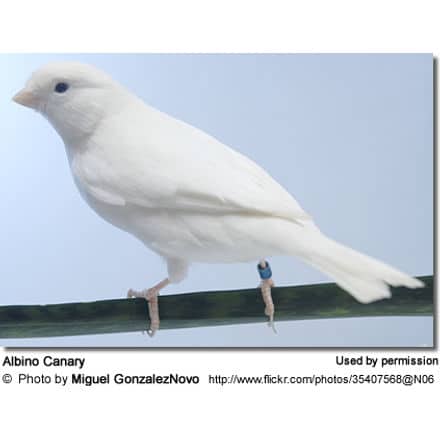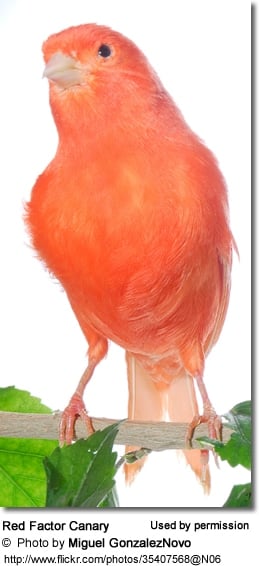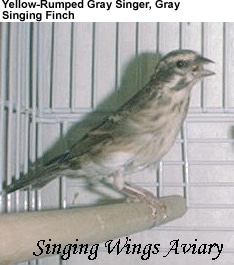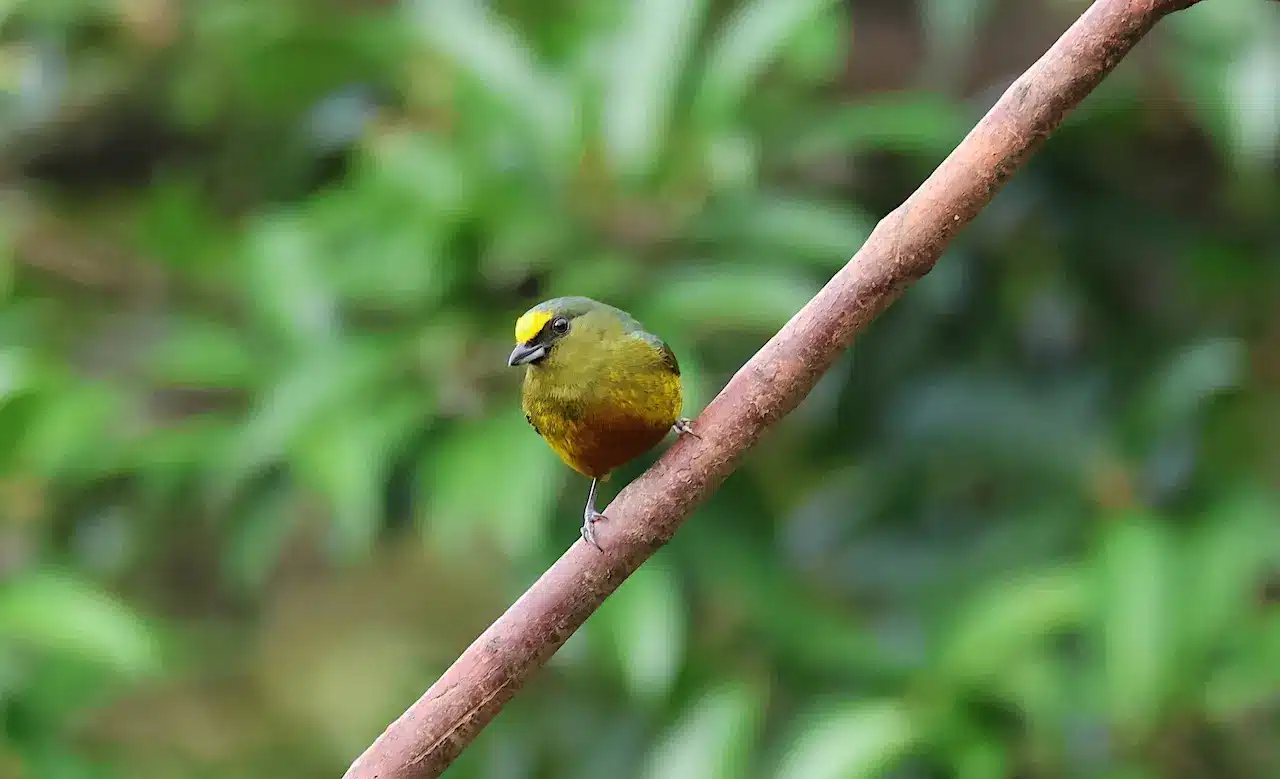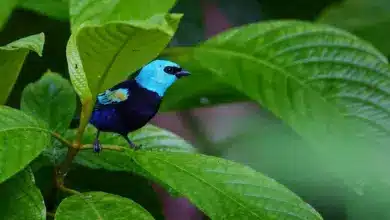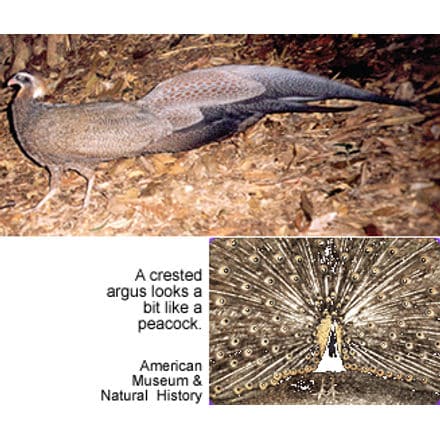Color Canaries: Information and Sound Recordings
Color canaries occur in many colors, color intensities, and variegations. The colors are a result of genes that control melanin and lipochrome. They are bred for the color of their plumages rather than physical characteristics or songs.
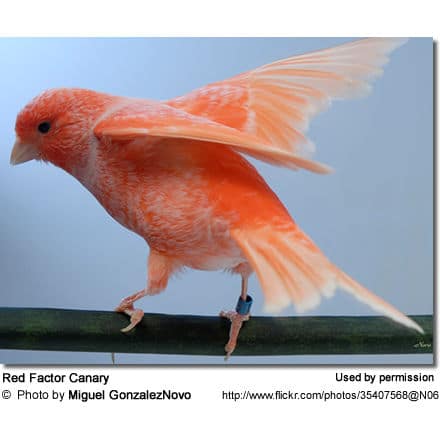
Song Canaries
Color Canaries
These birds average about 5.5 inches or 14 cm in length.
They are bred for the color of their plumages rather than physical characteristics or song.
Color canaries occur in many colors, color intensities and variegations. The colors are a result of genes that control the melanin and lipochrome.
Categories:
- Melanin:
- Produces a black / brown ground color
The absence of melanin results in a clear bird. Presence of melanin results in degrees of variegation.
- Lipochrome / Ino-Factor
- Yellow bird is referred to as a Lutino – yellow ground color obtained from the wild canary
- Red bird is a Rubino – red ground color achieved by crossing the South American Red Siskin (Carduelis cucullata) with a yellow canary
- White bird is an Albino / clear bird that lacks any melanin (pigments) in the feathers. Occurs in both dominant and recessive forms. The white of the dominant white canary is dominant to yellow (instead of being recessive). Dominant white canaries have a yellow tinge to the shoulders and the edges of the flight feathers (wings). Dominant white canaries may have dark or pink eyes, depending on the presence of the melanin.
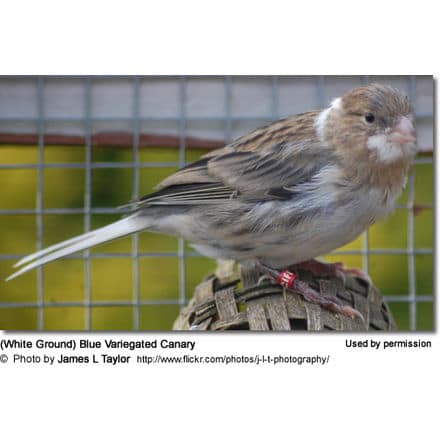
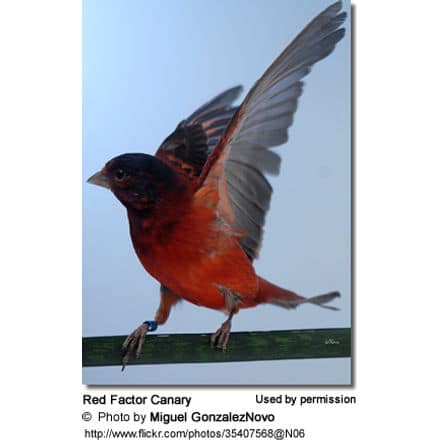
Dilutions of the melanin factors and primary colors:
- Ivory
- Lipochrom Yellow Ivory
- Lipochrom Red Ivory
- Pastel
Levels of Variegation:
- Clear: No variegation at all
- Self: All dark, with no light feathers (unbroken)
- Ticked: Melanin only affects a few feathers in a patch that is no bigger than a dime
- Foul: One or two light feathers in wing flights or tail
Everything in between the ticked canary and the foul canary is known as “variegated”:
- Lightly Variegated: Less than 50% dark markings
- Medium Variegated: Between 50% – 74% dark markings
- Heavily Variegated: More than 75% but less than 100% dark markings
The “Dilute Factor” refers to a paling or dilute factor in the lipochrome (called ivory) and pastel in the melanin.
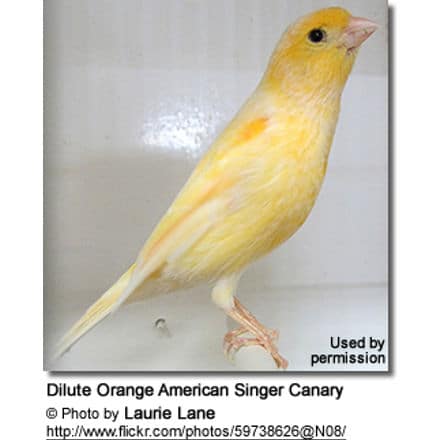
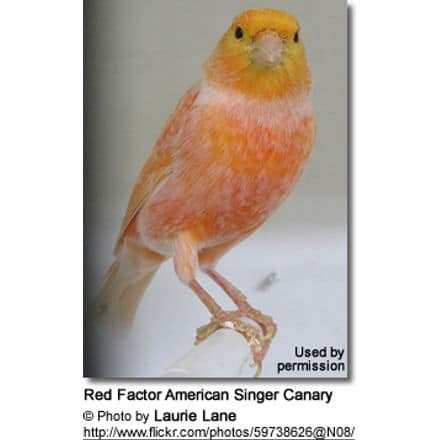
Agates: Black and brown melanin pigment are reduced; producing a shade of grey.
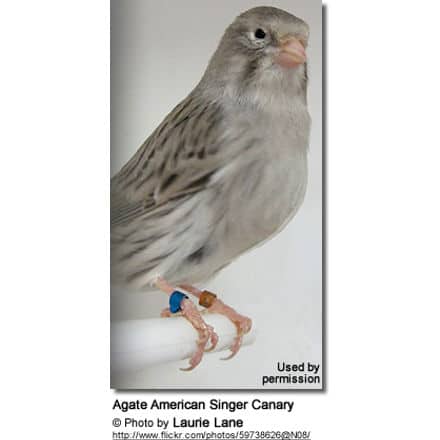
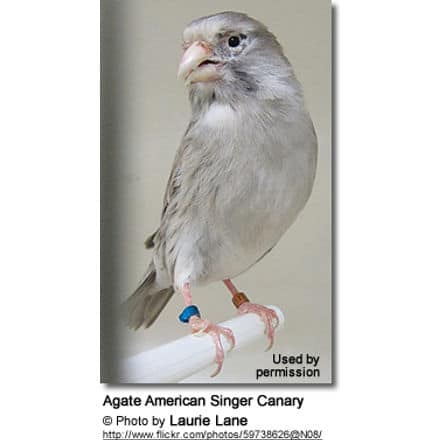
| Color Canaries | About the “Color” Bred Canary |
| Green (Wild Type) | Darkest black and brown melanin shade in yellow ground birds |
| Yellow Melanin | Mutation showing yellow ground color with brown and black pigment |
| Yellow Lipochrome | Mutation creating the loss of brown and black pigment leaving yellow ground color |
| Red Factor Melanin | Mutation showing red ground color with brown and black pigment. |
| Red Factor Lipochrome | Mutation creating the loss of black and brown pigment leaving red ground color |
| Blue Factor | Darkest black and brown melanin shade in white ground birds |
| Dominant White | Dominant mutation creating the loss of black and brown pigment leaving white ground color |
| Recessive White | Recessive mutation creating the loss of black and brown pigment leaving white ground color |
| Silver Factor | Mutation that combines white ground color with brown and black pigment |
| Pastel Factor | Sex-linked gene that reduces the intensity of black pigment in feathers |
| Ivory Factor | Sex-linked gene that reduces the strength of overall color |
| Dimorphic Factor | Sex-linked gene providing visual differences in gender such as the Mosaic |
| Opal Factor | Autosomal recessive gene which inhibits brown pigment and dilutes black to gray |
| Cinnamon | Sex linked mutation which eliminates all black pigment on a yellow ground bird |
| Fawn | Sex linked mutation which eliminates all black pigment on a white ground bird |
| Agate Series | Sex-linked gene which inhibits brown pigment but shows black/grey pigment |
| Isabel Series | color mutation combination of Brown and Agate |
| Satinet | sex-linked gene that produces pigment in back and flank markings only |
| Ino | Autosomal recessive mutation causing red eyes on a bird with brown pigment |
| Phaeo | mutation which inhibits black pigment and concentrates brown pigment on feather edges |
| Albino | mutation causeing total lack of all pigment |
| Onyx | Maximum expression of the black pigment and inhinbits brown pigment |
| Eumo | Mutation that inhibits brown pigment and reduces black pigment |
© Above chart is provided by Mandy and Paul – Breeder of Canaries and Other Exotic Birds – Singing Wings Aviary – www.singing-wings-aviary.com
